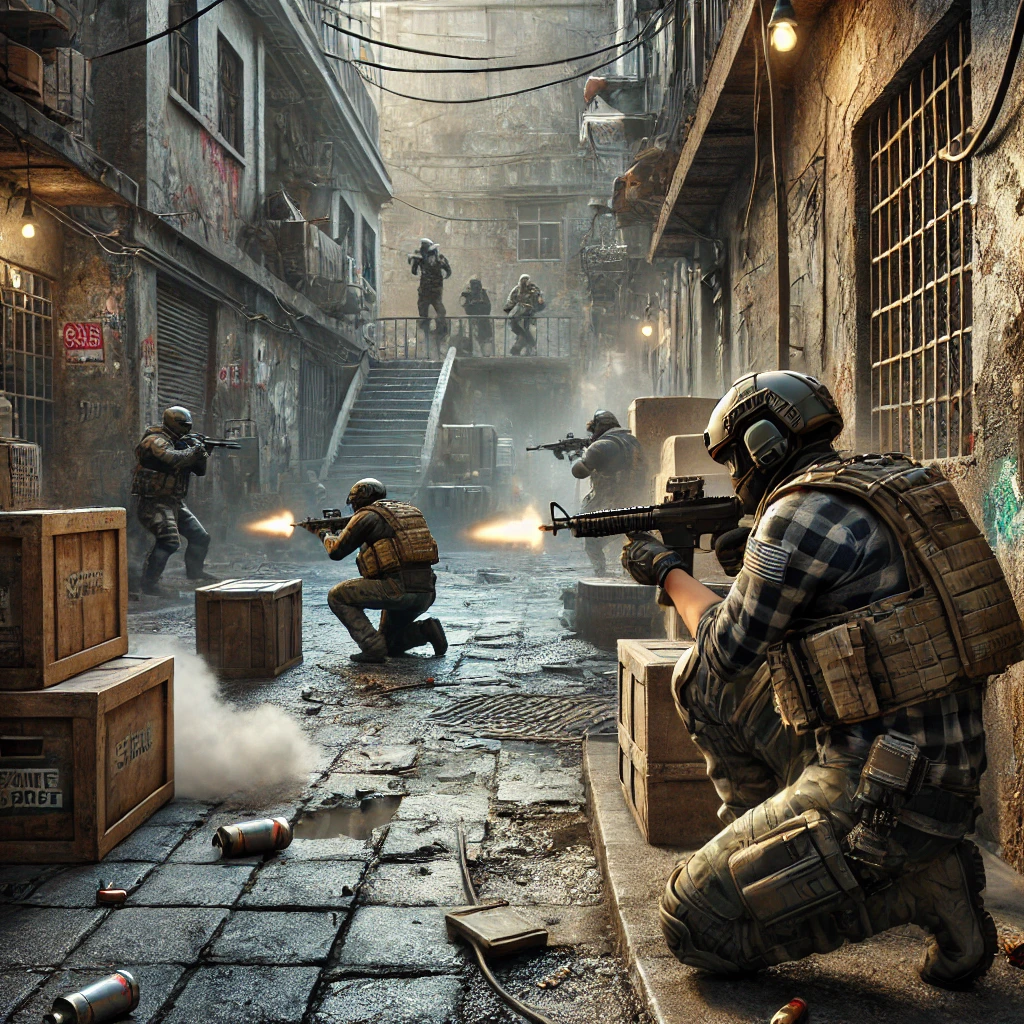How to Beat Higher-Ranked Opponents in Counter-Strike: Global Offensive

Categories:
4 minute read
Facing higher-ranked opponents in Counter-Strike: Global Offensive can be intimidating, but with the right approach and strategies, you can level the playing field and even secure victories against more experienced players. This comprehensive guide will explore the techniques and mindset needed to overcome skill gaps and win against stronger opposition.
Understanding the Skill Gap
Key Differences in Skill Levels
Higher-ranked players typically excel in:
Aim precision and consistency
Game sense and positioning
Utility usage
Map knowledge
Economy management
Team coordination Identifying Opponent Patterns
Analyzing higher-ranked players':
Common positions
Rotation tendencies
Utility usage patterns
Economic decisions
Aggressive/passive playstyle preferences
Strategic Advantages
Element of Surprise
Unconventional strategies can work in your favor:
Off-angle positions
Unexpected timing pushes
Novel utility combinations
Aggressive plays when expected to play passive
The site splits from uncommon angles Team Coordination
Maximize team effectiveness through:
Simple but effective strategies
Clear communication
Trading kills effectively
Supporting stronger teammates
Playing for map control
Economic Warfare
Force Buy Strategies
Catching higher-ranked teams off-guard:
Identifying optimal force-buy rounds
Coordinating equipment purchases
Maximizing utility effectiveness
Targeting weapon advantages
Exploiting timing windows Save Round Tactics
Making the most of eco rounds:
Gathering information
Preserving equipment
Setting up for future rounds
Damaging enemy economy
Securing exit frags
Map Control Techniques
Early Round Control
Establishing presence without overcommitting:
Securing key map areas
Using utility efficiently
Maintaining trade potential
Gathering information
Preserving resources Mid-Round Adjustments
Adapting to opponent patterns:
Rotating based on information
Fake executes and splits
Utility conservation
Position trading
Time management
Individual Improvement Focus
Aim Consistency
Developing reliable aim mechanics:
Regular aim practice routines
Crosshair placement drills
Spray control mastery
Movement accuracy
Pre-aiming common angles Game Sense Development
Improving decision-making:
Sound cue interpretation
Information processing
Timing awareness
Position reading
Economy tracking
Team-Based Strategies
Trading Systems
Ensuring every engagement is advantageous:
Buddy system implementation
Crossfire setups
Refrag positioning
Support flashing
Information Sharing Site Execution
Coordinated site takes:
Synchronized utility usage
Clear role assignment
Entry paths planning
Post-plant positioning
Retake preparation
Anti-Strat Techniques
Studying Opponents
Gathering and using information:
Demo review importance
Common setup identification
Tendency recognition
Weakness exploitation
Counter-strategy development Adapting Mid-Match
Quick adjustments to opponent patterns:
Timeout usage
Strategy variation
Position switching
Pace changes
Economy manipulation
Psychological Warfare
Maintaining Composure
Staying focused under pressure:
Positive communication
Round-by-round mentality
Momentum management
Tilt prevention
Team morale maintenance Building Confidence
Developing mental strength:
Celebrating small victories
Learning from mistakes
Supporting teammates
Maintaining focus
Setting achievable goals
Utility Maximization
Smoke Usage
Strategic smoke deployment:
One-way smoke setups
Split executes
Fake strategies
Retake support
Information denial Flash Coordination
Maximizing flash effectiveness:
Pop flash setups
Team flash timing
Flash communication
Recovery positioning
Counter-flash preparation
Post-Plant Situations
Defensive Setups
Maximizing post-plant advantages:
Crossfire positioning
Utility conservation
Time management
Information gathering
Rotation preparation Retake Strategies
Coordinated retake execution:
Utility usage
Position clearing
Trade setups
Time management
Kit prioritization
Practice and Preparation
Team Practice
Focused improvement areas:
Strategy development
Communication practice
Utility coordination
Position refinement
Timing synchronization Individual Development
Personal skill enhancement:
Aim training
Movement practice
Utility lineups
Position knowledge
Game sense development
Common Mistakes to Avoid
Strategic Errors
Prevention of common issues:
Over-aggression
Utility waste
Poor time management
Inadequate trading
Information misuse Mental Mistakes
Avoiding psychological pitfalls:
Overconfidence
Tilt susceptibility
Communication breakdown
Strategy abandonment
Team blame
Conclusion
Beating higher-ranked opponents requires a combination of:
Strategic preparation
Individual skill development
Team coordination
Mental resilience
Consistent practice Remember that success against stronger opposition comes from:
Playing to your team’s strengths
Exploiting opponent weaknesses
Maintaining positive communication
Staying adaptable
Learning from each match While facing higher-ranked opponents can be challenging, it presents valuable learning opportunities. Each match against stronger competition helps develop:
Better game sense
Improved mechanical skills
Stronger team coordination
Greater strategic understanding
Enhanced mental resilience Focus on consistent improvement rather than immediate results. Every round against better players is a chance to learn and grow, regardless of the outcome. Keep analyzing your games, adapting your strategies, and maintaining a positive team atmosphere, and you’ll find yourself increasingly capable of competing with and beating higher-ranked opponents.
Related Post: Top Mods to Enhance Your Counter-Strike: Global Offensive Experience
Feedback
Was this page helpful?
Glad to hear it! Please tell us how we can improve.
Sorry to hear that. Please tell us how we can improve.